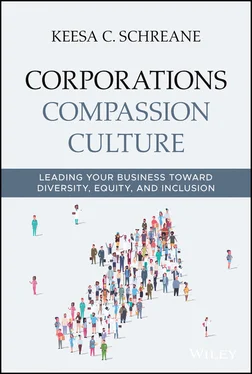John Merrick began his career as a barber and brick mason. Parlaying his technical skills and his ability to befriend his clientele, Merrick moved from a partnership in a barbershop to ownership of several barbershops to founding one of the largest Black businesses of its time. But ultimately Merrick's fortune was not made with bricks or haircuts but with insurance. Professor Douglas Bristol of the University of Southern Mississippi explains:
John Merrick's mutual life insurance company started out of his compassion, because there were people who had some misfortune happen. Members of the Black community would come in and ask for donations. And so he thought of a more dignified way to do that. At first, he started a mutual aid society, where people pay dues to get benefits. And then when there was a movement to regulate these mutual aid companies he started the North Carolina Mutual Life company, and took a big risk with his money. At that point, he had to just front the money so there had to be a minimum bond posted at the state insurance commissioner. At that point, they weren't making money. But he did it anyway. 18
By 1920 Merrick's firm grew to be the largest Black-owned company in the world. It had more than 1,000 employees, was earning nearly $2 million, and held about $30 million in assets, which translates to about $350 million in modern dollars. 19 The company was located in the Parrish Street area of Durham, North Carolina. Durham was one of several thriving communities of color in the United States—which were also sometimes known as Black Wall Streets—where Black owners, employees, and consumers enjoyed fair and equitable services, wages, treatment, and prices.
Compassionate leaders of the time were also able to ensure their suppliers practiced diversity (back before the phrase supply chain diversity was even in the lexicon). One example was A. G. Gaston, who had enterprises ranging from Birmingham's first Black-owned financial institution, an insurance firm, as well as the A. G. Gaston Motel. 20
Gaston's brand of compassion included a fearlessness and focus on making sure there was equality within the full business structure, including vendors, not just consumers, employees, and owners. Suzanne Smith, associate professor of history and art history at George Mason University, offers some thoughts on the significance of Gaston:
A. G. Gaston: he's really a corporate kind of guy, and the way in which he navigates his power as a businessman and the rising civil rights movement is utterly fascinating to me. He's able to both appease the White business community in Birmingham while also letting Martin Luther King Jr. stay at his motel; he just really is sophisticated in how he uses his power. And he uses this economic power to kind of fight in the movement in all of these fascinating ways. He got criticized by White people who thought he was being too supportive of the Black movement and then Black Power people thought he wasn't doing enough.
He was so ahead of his time, and he had such a vision. He was able early on, I think, to figure out how to use that economic power. He put pressure on car dealerships in Alabama. He's buying all his hearses from these car dealerships, but then they're not hiring Black people to work in it to sell cars. So he goes to the White car dealership and he says, “I'm not going to keep buying my hearses from you unless you hire Black people as salespeople,” and he pushes integration into this car dealership because they needed his money. He bought a lot of cars every year. He bought a lot of hearses and he knew he could do that. 21
Despite multiple tiers of complexities in being Black-owned businesses, compassionate service to and knowledge of their markets led to successful and profitable enterprises. This focus on genuinely serving consumers, employees, and suppliers is now in vogue. Business leaders need to be on notice. We're moving away from—as Michelle Obama told the 2020 Democratic National Convention—a “greed is good and winning is everything because as long as you come out on top nothing else matters,” mentality into a culture of prioritizing the good of the whole business, including those inside the business. We're moving, slowly yet vehemently, toward a business culture in which prioritizing people inside the company and ensuring inclusivity across all levels of the business is winning.
Black workers remain skeptical when businesses don't readily adopt this culture. We have proof positive that skepticism is well-founded when looking at the numbers of Blacks and other people of color making up leadership positions at firms.
Scholar Doug Bristol of the University of Southern Mississippi explains how competition between Black entrepreneurs was carried out in a healthy way:
In the 19th century Black barbers had what were called first-class shops. John Merrick [Durham] and Alonzo Herndon had a shop on Peachtree Street where they employed 20 barbers. I mean, there were only two other barbers operating on that scale. They beat their competition just by offering services and a number of employees that nobody could meet because these were palatial accommodations. They had bathhouses, you'd get a massage, people shaving your face while you're sitting in the chair; they competed with services. 22
People of Color in Leadership Today
The 2018 Board Diversity Census of Women and Minorities on Fortune 500 Boards, issued by Harvard Law School in February 2019, noted a critical need for inclusivity in C-suite leadership and company boardrooms. People of color in corporate America are still largely invisible. According to the report, only 16.1% of board seats in the Fortune 500 are held by people of color. 23 See Table 2.1.
Furthermore, the wage gap between White senior-level executives and other groups is significant. On average, Black men earned 87 cents to every dollar earned by a White man in 2019; Black, Latinx, and Native American women earned 75 cents for every dollar; and Asian women earned 93 cents. 24 Hispanic men earned 91 cents for every dollar earned by White men and White women earn 81 cents for the White man's dollar. Interestingly, Asian men earned $1.15 for every dollar earned by a White male in 2019. 25
Table 2.1 Breakdown of Fortune 500 Total Board Seats by Race/Ethnicity: 2018
Source: Data from DeHaas, D. (2019) Missing Pieces Report: The 2018 Board Diversity Census of Women and Minorities on Fortune 500 Boards, The President and Fellows of Harvard College (February 5, 2019).
| Race/Ethnicity |
Percentage of Fortune |
500 Board Seats |
| Caucasian/ White |
83.9 |
83.9 |
| Black |
8.6 |
16.1 |
| Latinx |
3.8 |
| Asian/ Pacific Islander |
3.7 |
| Other |
0.1 |
The lack of diversity at the senior level creates an environment in which people of color must deal with mental gymnastics not required of their White peers at work. They are not represented, they are paid substantially less than their colleagues, and they often feel that managers don't even put forth an effort to understand their points of view. If you think about what it's like to deal with these inequities, combined with such psychological mistreatment as being isolated by colleagues or having your insights and contributions to meetings ignored, it's obvious how an employee's sales and production numbers can be negatively affected.
Looking at the data makes it clear that a compassionate culture where leadership and employees actively promote inclusion is necessary for a firm to keep pace and lead in the new evolving global corporate era. Compassionate culture today is a necessity, not a luxury.
Colorism Infiltrates Global Corporate Environments
Читать дальше












